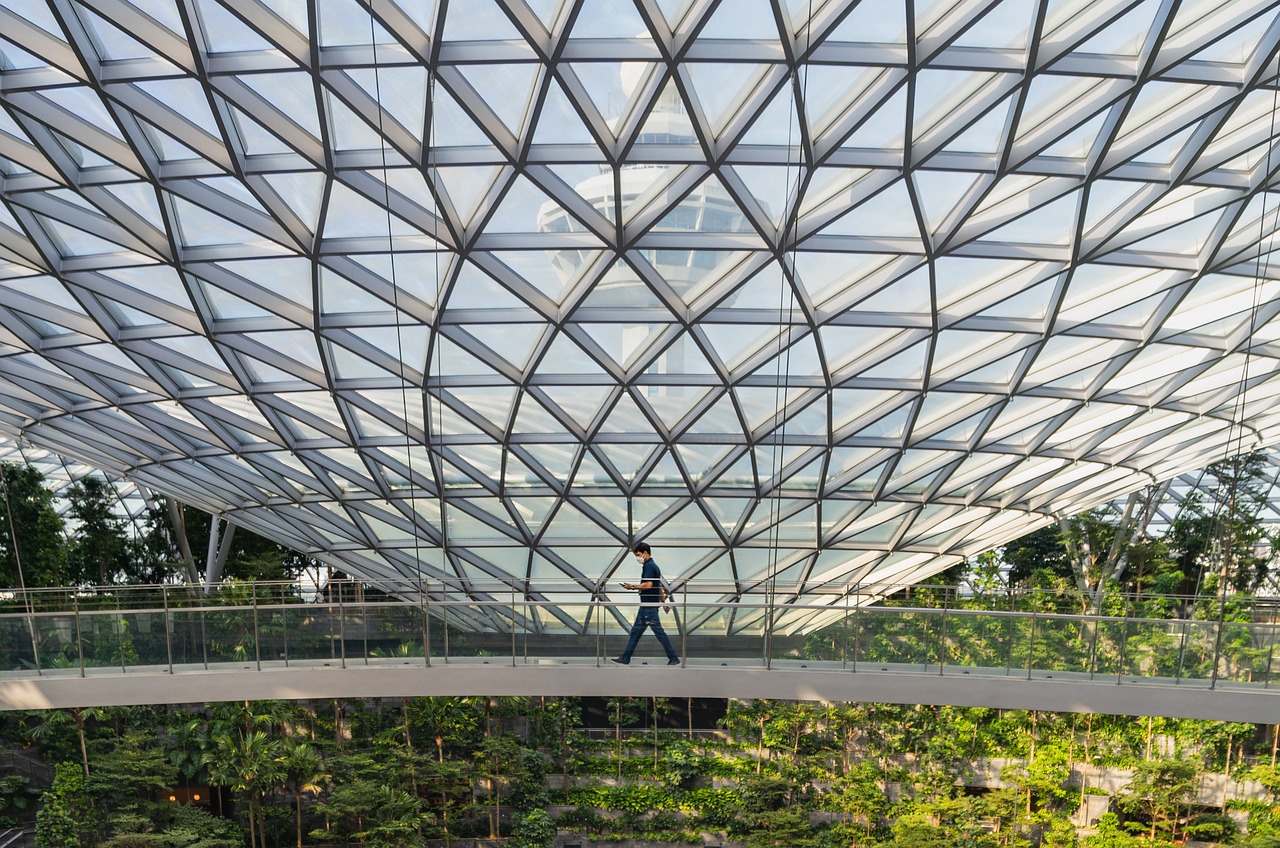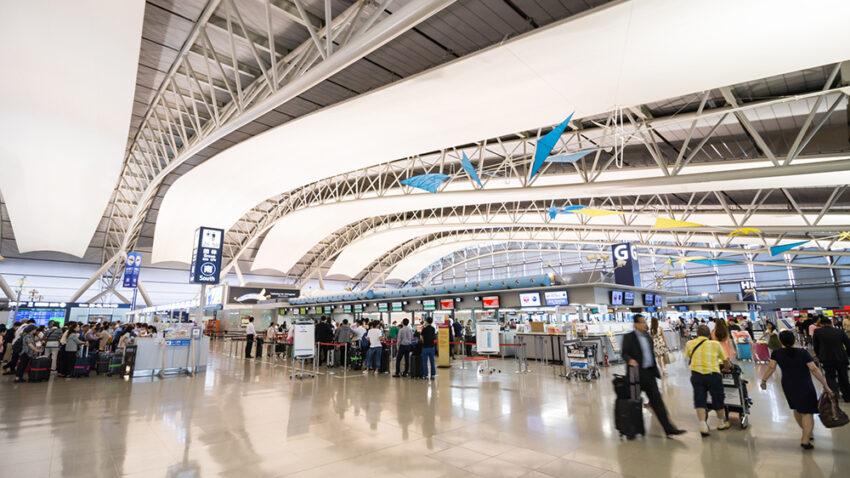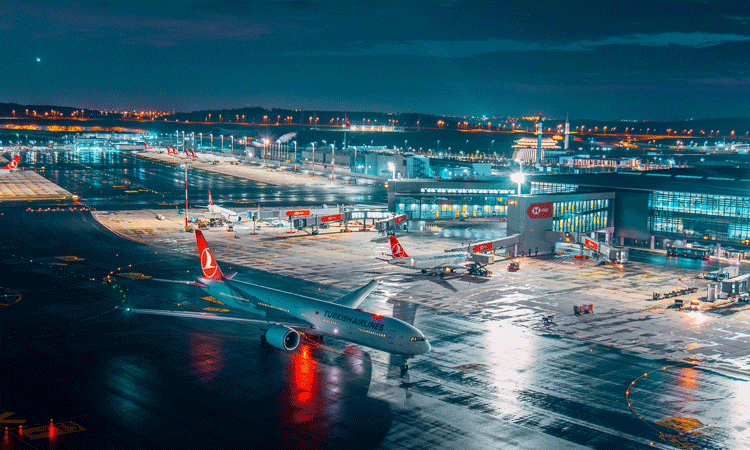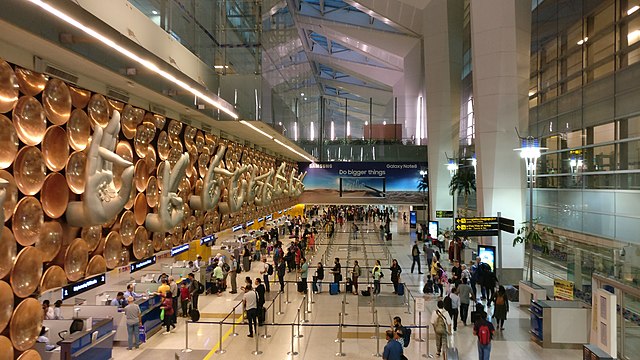Introduction
In the realm of modern air travel, airports are not merely gateways to destinations; they are also windows into the heart and soul of the regions they serve. An increasing number of airports worldwide have recognized the value of offering authentic local experiences to travelers, transforming layovers and stopovers into cultural adventures. These airports are not just transportation hubs; they are cultural immersion destinations in their own right.
The transformation of airports into cultural immersion destinations is a remarkable evolution in the world of travel. This trend not only enriches the traveler’s experience but also deepens the connection between the airport and the region it represents. Here, we delve into why these airports are becoming more than just gateways and how they are turning layovers and stopovers into memorable cultural adventures:
1. Showcasing Local Art and Culture:
Airports embracing cultural immersion often feature local art installations, exhibitions, and performances. Travelers can explore galleries showcasing regional artists, watch live cultural performances, and even participate in interactive exhibits that introduce them to the area’s history, traditions, and customs.
2. Culinary Discoveries:
These airports serve as culinary gateways to the region, offering travelers a chance to savor local flavors and specialties. From street food stalls to fine dining restaurants, airports are becoming hubs for authentic regional cuisine. Passengers can embark on gastronomic journeys, sampling dishes that reflect the culinary heritage of the area.
3. Cultural Workshops and Activities:
Some airports offer cultural workshops and activities that allow travelers to engage directly with local traditions. These may include cooking classes, craft workshops, or dance lessons. It’s an opportunity to not only learn about the culture but also participate in its preservation.
4. Airport Design and Architecture:
Airports are increasingly designed to reflect the cultural identity of the region they serve. From architectural elements inspired by local landmarks to interior design that showcases indigenous materials and craftsmanship, airports provide a visual and tactile connection to the destination.
5. Souvenirs and Shopping:
Airport shops have evolved beyond duty-free outlets to offer a curated selection of local products and handicrafts. Travelers can shop for unique souvenirs that capture the essence of the region, from textiles and artwork to artisanal goods and specialty foods.
6. Cultural Concierge Services:
Some airports provide cultural concierge services to assist travelers in planning their cultural adventures. These services can help arrange guided tours, recommend cultural events, and provide insights into local customs and etiquette.
7. Green Spaces and Gardens:
Airports are incorporating green spaces and gardens that reflect the natural beauty of the region. Travelers can take a leisurely stroll through botanical gardens, tranquil courtyards, or outdoor terraces, providing a serene respite amidst their journey.
8. Cultural Festivals and Events:
Many airports host cultural festivals and events that coincide with major holidays or celebrations in the region. Travelers can immerse themselves in local festivities, from traditional music and dance performances to art fairs and cultural parades.
9. Educational and Informational Resources:
Airports offer travelers access to educational resources and informational materials about the region. This includes brochures, maps, and digital displays that provide insights into the area’s history, landmarks, and attractions.
10. Promoting Responsible Tourism:
By offering cultural immersion experiences, airports also contribute to responsible tourism. Travelers gain a deeper appreciation for the culture and heritage of the region, which can lead to more respectful and sustainable travel practices.
In conclusion, airports that embrace cultural immersion are redefining the travel experience. They are no longer mere transit points but rather integral parts of the journey, allowing travelers to connect with the culture, traditions, and flavors of the regions they serve. These airports not only enhance the traveler’s experience but also contribute to a deeper understanding and appreciation of the diverse cultures that make our world so rich and fascinating.
If you’d like to dive deeper into this subject, there’s more to discover on this page: Airbnb and the Hotel Industry: The Past, Present, and Future of …
Airports have evolved from utilitarian structures to iconic symbols of their regions. They now serve as cultural ambassadors, showcasing the heritage, traditions, and flavors of the areas they represent. Let’s explore some airports that excel in providing authentic local experiences:
“Airports have transformed into cultural gateways, offering travelers a glimpse into the essence of the regions they serve. These airports go beyond transportation hubs, embracing their roles as cultural ambassadors, and provide travelers with authentic local experiences. Here are some of the airports that shine in this regard:”
To delve further into this matter, we encourage you to check out the additional resources provided here: Future Traveller Tribes 2030

Singapore’s Changi Airport consistently ranks among the world’s best airports, and its commitment to offering a cultural immersion experience is a key reason. Travelers passing through Changi can explore the Butterfly Garden, home to hundreds of butterflies, or stroll through the Orchid Garden, which features over 700 orchids. For a taste of local cuisine, the airport offers hawker-style food stalls serving Singaporean classics like Hainanese chicken rice and laksa.
Singapore’s Changi Airport stands as a testament to the fusion of modern travel convenience and cultural immersion. This world-renowned airport doesn’t just facilitate journeys; it elevates them into unforgettable experiences. Amidst its sleek terminals and efficient facilities, travelers can escape into lush green spaces like the Butterfly Garden, where hundreds of delicate butterflies flutter about in a tropical oasis. Alternatively, they can wander through the Orchid Garden, an exquisite retreat adorned with over 700 vibrant orchids.
But it’s not just the flora that enriches the Changi experience; it’s also the flavors. Hawker-style food stalls beckon with the aromas of Singaporean classics like Hainanese chicken rice and laksa, offering a delectable introduction to the nation’s culinary heritage. Whether you have a layover or you’re beginning your adventure in Singapore, Changi Airport ensures that every moment spent within its walls is an exploration of culture, nature, and the pleasures of the palate.
Looking for more insights? You’ll find them right here in our extended coverage: Airport Street Food Courts : “airport food court”

Located in Doha, Hamad International Airport offers travelers a glimpse into Qatari culture and luxury. The airport houses an exquisite art collection featuring sculptures and installations by renowned artists. Passengers can also enjoy local Qatari cuisine at the many restaurants and cafes, providing a delightful culinary introduction to the country’s flavors.
Hamad International Airport in Doha, Qatar, is more than just a transit point; it’s a destination in its own right, offering travelers a captivating immersion into Qatari culture and luxury. Here’s why this airport stands out as a unique and enriching experience:
1. A Cultural Oasis: Hamad International Airport is a living gallery of art and culture. The airport’s art collection showcases a stunning array of sculptures and installations by world-renowned artists. As travelers make their way through the terminals, they are treated to thought-provoking and visually captivating works of art. This cultural immersion sets the stage for a journey that goes beyond the ordinary.
2. Art as a Journey: The airport’s commitment to art isn’t just decorative; it’s an invitation for travelers to embark on a journey of exploration and reflection. The diverse range of artworks offers a glimpse into different artistic styles and themes, making each visit to the airport a unique experience.
3. A Culinary Extravaganza: Qatar is known for its rich culinary heritage, and Hamad International Airport ensures that passengers get a taste of the country’s flavors. The airport boasts a plethora of restaurants and cafes serving local Qatari cuisine. From traditional dishes like lamb majboos and harees to sweet delights like rosewater-infused desserts, the airport’s dining options offer a delectable culinary introduction to Qatar.
4. An Architectural Marvel: The airport’s architecture is a masterpiece in itself. Its modern design, luxurious interiors, and attention to detail create an ambiance of opulence and sophistication. Travelers are surrounded by elegance at every turn, making their time at the airport an experience of utmost comfort and style.
5. A Relaxing Oasis: Hamad International Airport offers passengers a range of relaxation options, from well-appointed lounges to spa facilities. Travelers can unwind and rejuvenate in a tranquil environment, ensuring that their journey is not just about reaching a destination but also about finding moments of serenity along the way.
6. A Bridge to the World: Beyond its cultural offerings, the airport serves as a vital global hub, connecting travelers to destinations across the globe. It’s a testament to Qatar’s vision of being a bridge between cultures, fostering understanding and connectivity among people from diverse backgrounds.
7. A Memorable Stopover: For passengers with layovers in Doha, Hamad International Airport transforms what could be a mundane stopover into a memorable experience. Travelers can explore the airport’s attractions, indulge in culinary delights, and even take in a bit of art and culture, all within the airport’s confines.
In conclusion, Hamad International Airport is a shining example of how an airport can transcend its functional purpose to become a destination that enriches the traveler’s journey. It invites passengers to immerse themselves in art, savor local flavors, and experience the warm hospitality of Qatar. More than just a transit point, it’s a testament to the country’s commitment to offering a holistic and memorable travel experience from the moment passengers set foot in Qatar.
You can also read more about this here: Cheap Flights to Riyadh (RUH) from £362 | Book Online

Kansai International Airport in Osaka, Japan, welcomes travelers with a traditional Japanese Noh theater performance in the terminal building. Visitors can also participate in tea ceremonies and try their hand at origami, immersing themselves in Japanese traditions. The airport’s design, featuring architectural elements inspired by Japanese culture, further enhances the cultural experience.
Kansai International Airport in Osaka, Japan, offers a captivating cultural introduction to travelers. Beyond being a transportation hub, it serves as a gateway to Japanese heritage and traditions. With live Noh theater performances, tea ceremonies, and origami workshops, visitors can engage in authentic cultural experiences right within the airport’s confines. The architectural design, inspired by Japanese aesthetics, provides a visual journey through the country’s rich history and artistry, making it more than just an airport but a cultural immersion before venturing further into Japan.
Looking for more insights? You’ll find them right here in our extended coverage: Article(s) for the theme Travelling in Japan: guide and advice …

Istanbul Airport reflects Turkey’s rich history and culture. The airport boasts a Turkish cultural center where travelers can learn about Turkish arts, crafts, and traditions. Passengers can savor authentic Turkish delights like baklava and Turkish coffee or explore the airport’s extensive duty-free shops offering Turkish products.
Istanbul Airport, with its rich cultural center, invites travelers to immerse themselves in Turkey’s vibrant heritage. Visitors can indulge in authentic Turkish delicacies, explore traditional arts and crafts, and discover a wide range of Turkish products at the duty-free shops. It’s a gateway to Turkish culture and hospitality right at the airport.
To delve further into this matter, we encourage you to check out the additional resources provided here: YOTEL: Modern Hotel Experience | City and Airport Hotels

Delhi’s Indira Gandhi International Airport is a gateway to India’s diverse cultural heritage. The airport’s impressive art installations showcase India’s artistic traditions, and travelers can enjoy live classical Indian music performances. Dining options include Indian cuisine, allowing passengers to savor regional dishes before even leaving the airport.
Delhi’s Indira Gandhi International Airport stands as a testament to India’s rich cultural heritage and artistic prowess. Beyond its role as a transportation hub, this airport serves as an inspiring introduction to the diverse and vibrant tapestry of Indian culture.
One of the most striking features of the airport is its impressive collection of art installations. These artworks pay homage to India’s artistic traditions, spanning centuries of creativity and innovation. Travelers passing through the airport are greeted by sculptures, paintings, and installations that reflect the country’s history, spirituality, and artistic heritage. From intricate sculptures depicting deities to contemporary pieces that explore India’s modern identity, these artworks create an immersive cultural experience that resonates with passengers from around the world.
Adding to the cultural immersion, Indira Gandhi International Airport often hosts live classical Indian music performances. The soul-stirring melodies of traditional instruments like the sitar, tabla, and flute fill the air, creating an atmosphere of tranquility and grace. Travelers can pause and enjoy these performances, allowing the music to transport them to the heart of India’s musical traditions.
Moreover, the airport’s dining options offer passengers the opportunity to savor the flavors of India before they even leave the terminal. From street food stalls serving spicy chaat to fine dining restaurants offering a culinary journey through India’s diverse regions, there’s a wealth of dining experiences to choose from. Travelers can indulge in regional specialties, savor aromatic spices, and explore the diverse culinary traditions that make Indian cuisine a global favorite.
Indira Gandhi International Airport, with its celebration of art, music, and cuisine, is more than just a place of transit; it’s a cultural crossroads. It invites travelers to engage with India’s artistic and culinary treasures, setting the stage for a deeper appreciation of the country’s heritage and traditions. Whether you’re arriving in India or bidding farewell to this remarkable land, the airport ensures that the journey itself is a memorable cultural experience, providing a glimpse into the incredible diversity and beauty of India’s cultural tapestry.
To expand your knowledge on this subject, make sure to read on at this location: India Volunteer Programs from $18/day | Most Affordable & Trusted …

As travelers seek meaningful connections with the places they visit, airports are responding by elevating their cultural offerings. From art installations and performances to local cuisine and interactive exhibits, these airports are transforming layovers into opportunities for cultural exploration. The cultural immersion trend in airports is poised to continue growing, offering travelers enriching experiences that extend beyond their final destinations.
The rise of cultural immersion in airports not only provides entertainment and education for travelers but also contributes to the local economy and tourism. By showcasing the unique culture, art, and cuisine of their regions, airports become valuable ambassadors for their cities and countries, leaving a lasting impression on those passing through. This trend fosters a deeper appreciation for the diversity and richness of our global community, one layover at a time.
If you’d like to dive deeper into this subject, there’s more to discover on this page: Future Traveller Tribes 2030

Conclusion
In conclusion, airports have become more than just logistical hubs; they are portals to the diverse and captivating cultures of the regions they serve. By offering authentic local experiences, these airports provide travelers with a taste of the destination’s heritage and traditions, making the journey itself an integral part of the adventure. Whether it’s enjoying traditional cuisine, exploring art and culture, or participating in local customs, cultural immersion at airports is redefining the travel experience.
Airports have become gateways to cultural experiences, offering travelers a taste of the destination’s heritage. From cuisine to art, they redefine the journey itself.
For additional details, consider exploring the related content available here Future Traveller Tribes 2030
More links
For a comprehensive look at this subject, we invite you to read more on this dedicated page: Tourism needs more ‘cultural immersion’
